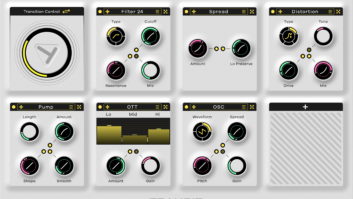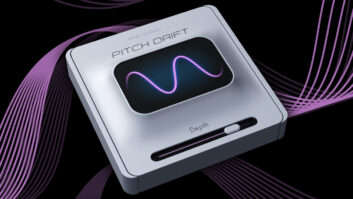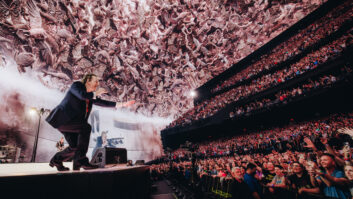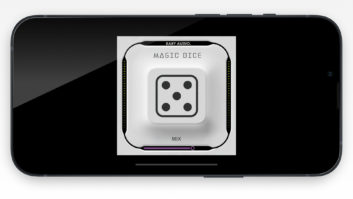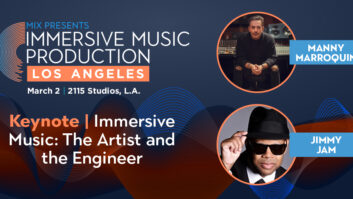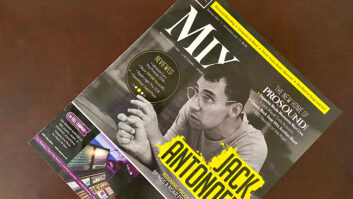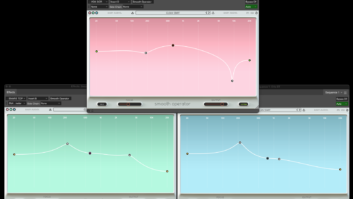Another warm welcome to you all for joining me in this Mastering Matters blog-journey. Last time, we jumped into a simple math equation: D=D digital is delicate.
Well, this time we’re going to look at another subject; I’ll call it “Mano a Mono.“ This refers to how we mastering engineers here at BGM like to receive your music when you are in a digital format.
As I mentioned (or rather alluded to) in the first blog: All statements in this series are approved by my father, Bernie Grundman, and backed by our other engineers derived from blind audio testing at our Hollywood facility. Our design technicians also test heavily for further scrutiny, but our engineers’ ears are the final and most defining test tool.
It’s asked all the time, perhaps even 99% of the time: “How should I send you our music?” or “In what format do you want the music?” or some variation on this theme of questioning. This question is a fine one. What we’ll point out today can help all of you that are engineers, mixers, producers, and those that wear one or more of these hats. Think of doctors always having their first rule as “Do no harm.” This is sort of the way we want to approach everything here first and foremost. Sure, you could bring me a broken cassette (in fact, someone did last week), but if you have something on one format or mixed down one way, transitioning less formats is better than copying it to a CD or another drive and/or sending it in a non-encrypted internet/web format.
Example: In a perfect world, you (mixer) would be mixing down (if in digital) to multiple mono format (not stereo interleaved) and not dithered at all from the resolution you were recording. Furthermore, if you could mix down to an external drive and bring that very drive in with you, we’d be as close as possible to what was actually approved at mixdown. Too many times, people will copy to many locations, store the mixdowns and make data CDs—and yes, you might think it sounds the same when you get here, but there are subtle changes that occur and if you have the kind of test facility we have where we can listen in an a/b/c/d + reference method, you’d be astounded at the small subtle changes that occur—but how overall, it can affect your music.
Do no harm. So mixdown to the location you will bring us, and/or upload using a very scrutinizing sample by sample comparison transfer system like Digidelivery (going the way of the dodo soon). We’ve tested the Digi against copying and then re-loading and Digi does a very good job. Remember, once it’s on a server that you’ve uploaded to, your mastering house can still mishandle it, I’m sure, but I only can speak for the way we handle your work. We care a great deal about this, and why? Because if a mixer comes in and detects any change in his $10k per mix sound, you can bet we’ll hear about it…Or not 😉
What’s with the “Mano a Mono”? Well , when we playback in multiple mono, it beats the stereo interleaved by comparison. We’ve found that 10 times out of 10, listening down to multiple mono mixdown, and multiple-mono playback sounds better than stereo interleaved, and the clients choose it, too. We like to interleave or bring it into a stereo file at the time of live mastering. We perform all mastering live and even volume rides live. Nothing is left to automation in the box (in a typical session). There are exceptions where I’ve seen a mastering engineer work in the 96k domain, but this is when the program material is being worked with and in 96k natively (there is no rule there; it is taste) and likely dithered later. I bet if you asked Bernie about ever capturing (mastering to) 96k INSIDE our capture computers, he’d say he never has captured in 96K unless a client wanted to preserve something from tape for archival purposes. In that case, we would run the Studer (tape machine with our custom tape electronics) directly into our computers, bypassing everything (for archival).
So, for most sessions and to help all of you that are bringing your music in, I’d like to reiterate that if you keep your files sequestered to the mixdown location as much as possible, and mixing down in multiple mono (A mano) undithered, that would be your best effort in “doing no harm.” In all of our tests, and even when clients are given the option, they’ve always chosen the dual-mono playback over the stereo-file interleaved (pre-mastering). I won’t get into the summing, specifics on DAWs or speculations, but I will say in an environment where you might have Steinberg WaveLab, Nuendo, or Pro Tools HD playback software, this would be the way. It’s just another small part to the laundry list of ways you can keep your hard work preserved. Again, it’s not the end of the world if you haven’t (we’ll probably split your stereo file into dual mono for playback anyway), but if you want to know the best way to keep it unharmed, this is it. If you mixdown to tape, that’s a different story.
In our next blog, we’ll get all philosophical on you, so stay tuned—it’s gonna get heavy, man. Thanks for all of your feedback as well. If you ever want to tour our studios, or see how the sausage is made, just email or call us to schedule and I’ll make you a cup (or Jon will) of the best espresso-based bev this side of the console.
Happy Halloween!
Paul
